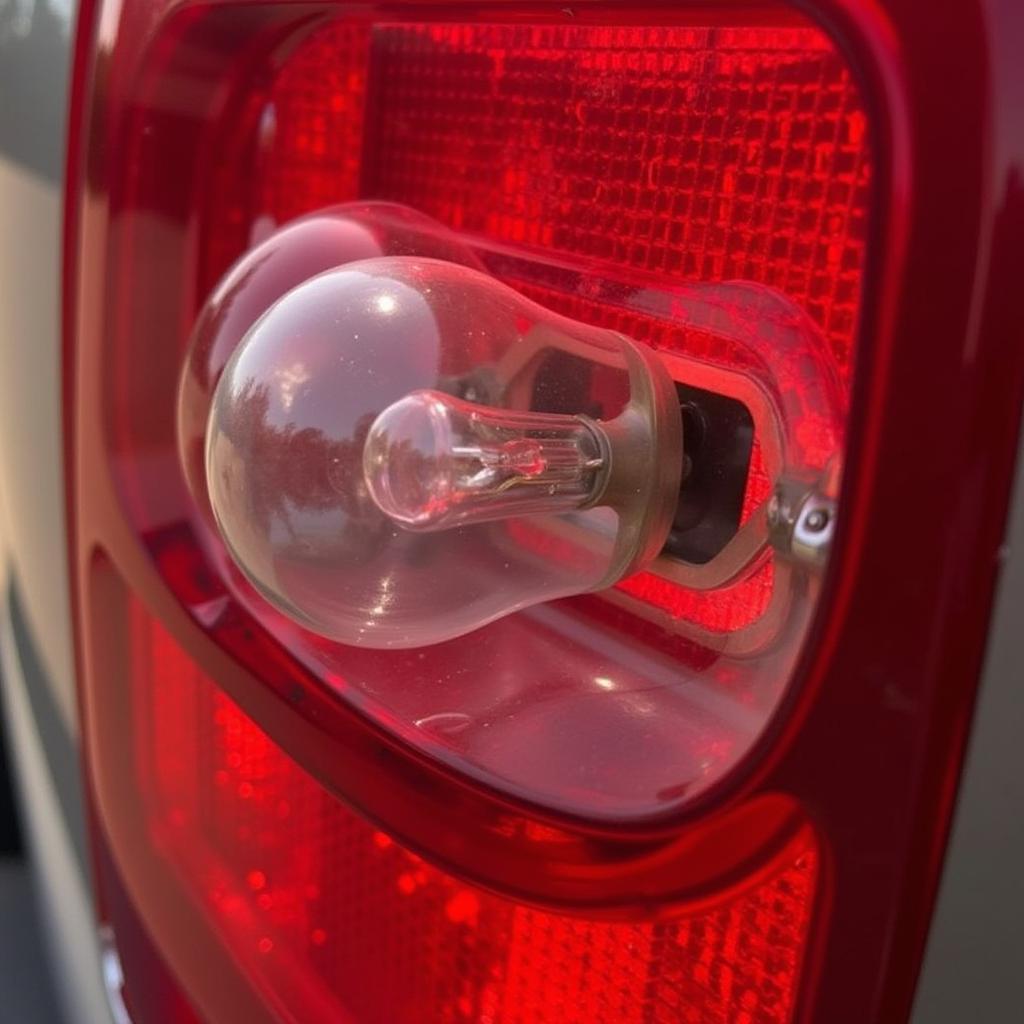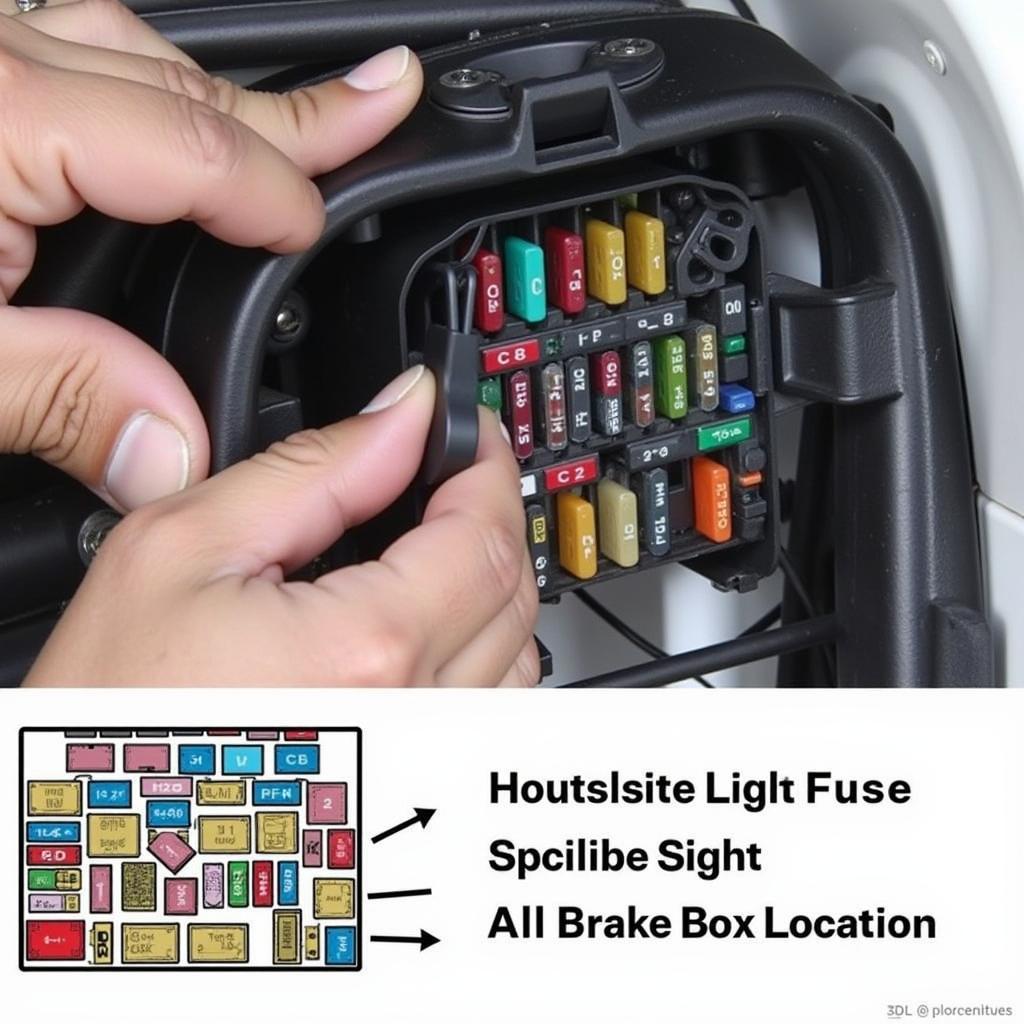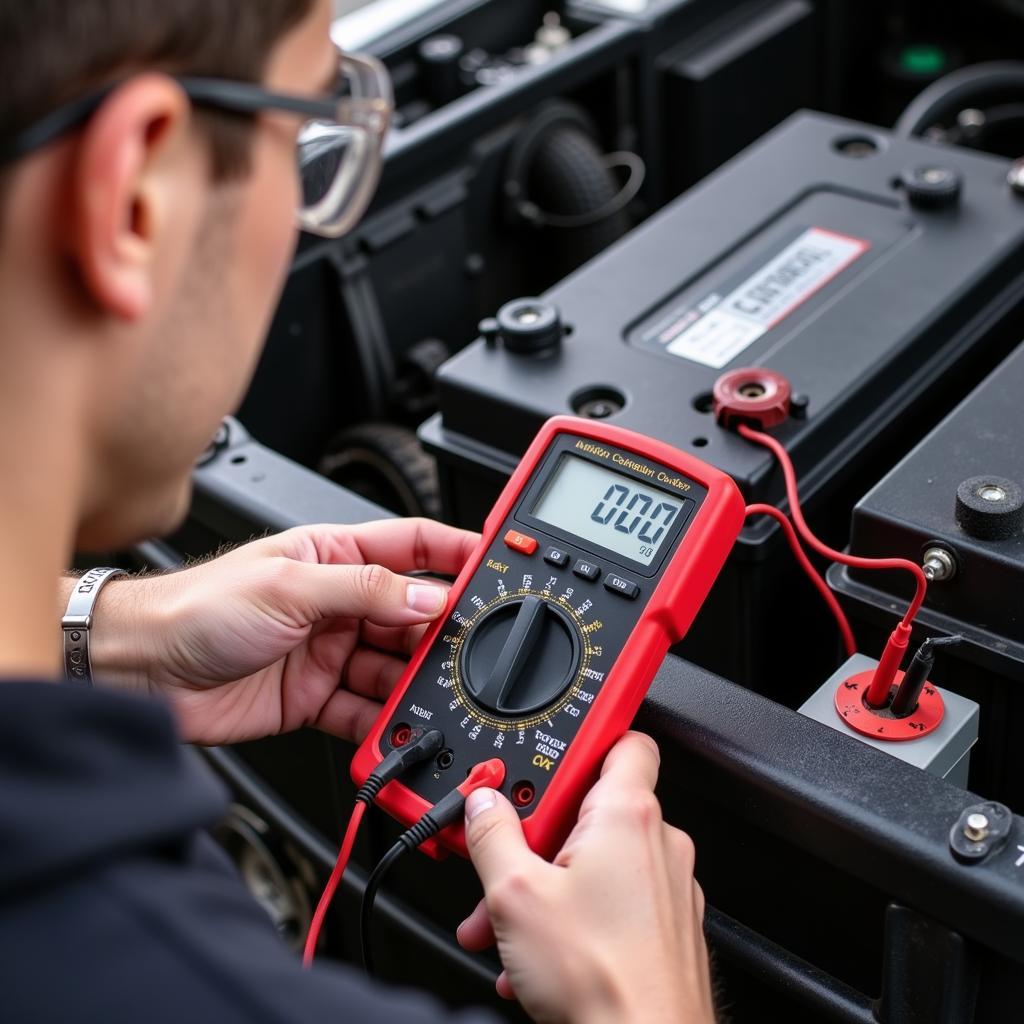The dreaded brake light warning on your 1999 Dodge Dakota can be a frustrating experience. Whether it’s a persistent glow or an intermittent flicker, this warning signal indicates a problem within your braking system that needs immediate attention. This article will guide you through the common causes of this issue, provide troubleshooting steps, and offer solutions for getting your brake lights back in working order.
Understanding the Brake Light Warning
The brake light warning on your dashboard is triggered when the vehicle’s onboard computer detects an issue with the brake light circuit. This could range from a simple blown bulb to a more complex wiring problem. Ignoring this warning can lead to safety hazards, as your brake lights are crucial for signaling your intentions to other drivers.
Common Causes of Brake Light Problems
- Blown Bulbs: This is the most common culprit. Brake light bulbs have a limited lifespan and can burn out over time.
- Faulty Brake Light Switch: The brake light switch, located above the brake pedal, activates the brake lights when the pedal is pressed. A malfunctioning switch can prevent the lights from illuminating.
- Wiring Issues: Damaged or corroded wiring in the brake light circuit can disrupt the flow of electricity and cause the lights to malfunction.
- Blown Fuse: A blown fuse in the brake light circuit will cut off power to the lights.
 Blown Brake Light Bulb on a 1999 Dodge Dakota
Blown Brake Light Bulb on a 1999 Dodge Dakota
Troubleshooting Your Brake Light Warning on a 1999 Dodge Dakota
- Check the Bulbs: Start by inspecting the brake light bulbs. If a filament is broken or the bulb appears blackened, it needs replacing.
- Inspect the Brake Light Switch: Locate the brake light switch above the brake pedal. Check for any signs of damage or loose connections. You can test the switch with a multimeter to ensure it’s functioning correctly.
- Examine the Wiring: Trace the wiring from the brake light switch to the tail lights. Look for any frayed, corroded, or damaged wires. Repair or replace any faulty wiring.
- Check the Fuse Box: Locate the fuse box and identify the fuse responsible for the brake lights. If the fuse is blown, replace it with a new fuse of the same amperage.
 Checking the Brake Light Fuse on a 1999 Dodge Dakota
Checking the Brake Light Fuse on a 1999 Dodge Dakota
How can I test the brake light switch?
You can test the brake light switch with a multimeter by checking for continuity when the brake pedal is pressed.
What if my brake lights still don’t work?
If the problem persists after these steps, it’s recommended to consult a qualified automotive electrician for further diagnosis.
“Regularly checking your brake lights is a simple yet crucial safety precaution,” says John Miller, a certified automotive technician with over 20 years of experience. “It only takes a few minutes and can prevent accidents.”
Remote Diagnostics and Programming: A Modern Solution
In today’s automotive landscape, remote diagnostics and programming offer a convenient and efficient way to address brake light issues and other vehicle problems. By connecting your 1999 Dodge Dakota to a specialized diagnostic tool, a qualified technician can remotely access your vehicle’s computer system, identify the root cause of the problem, and even reprogram certain modules to resolve software-related malfunctions. This approach eliminates the need for a physical visit to a repair shop, saving you time and potentially money.
Conclusion
Addressing the brake light warning on your 1999 Dodge Dakota is essential for your safety and the safety of others on the road. By following the troubleshooting steps outlined in this article, you can often identify and fix the problem yourself. However, if you encounter complex issues or prefer professional assistance, remember that remote diagnostics and programming services can offer a modern and efficient solution. Don’t delay – get your brake lights working correctly today.
“Remote diagnostics are revolutionizing the way we troubleshoot and repair vehicles,” adds Sarah Johnson, an electrical engineer specializing in automotive systems. “It’s a game-changer for both technicians and vehicle owners.”
FAQ
- How often should I check my brake lights? It’s recommended to check your brake lights at least once a month.
- Can I replace my brake light bulbs myself? Yes, in most cases, replacing brake light bulbs is a simple DIY task.
- Where is the fuse box located in a 1999 Dodge Dakota? The fuse box is typically located under the dashboard or in the engine compartment. Refer to your owner’s manual for the exact location.
- How much does it cost to replace a brake light switch? The cost of a brake light switch replacement can vary depending on the make and model of your vehicle.
- What is the difference between brake lights and tail lights? Tail lights illuminate when your headlights are on, while brake lights activate when you press the brake pedal.
- What should I do if my brake lights still don’t work after replacing the bulbs and fuse? If the problem persists, you should consult a qualified mechanic.
- Can remote diagnostics fix all brake light problems? While remote diagnostics can address many brake light issues, some problems may require physical repair.

